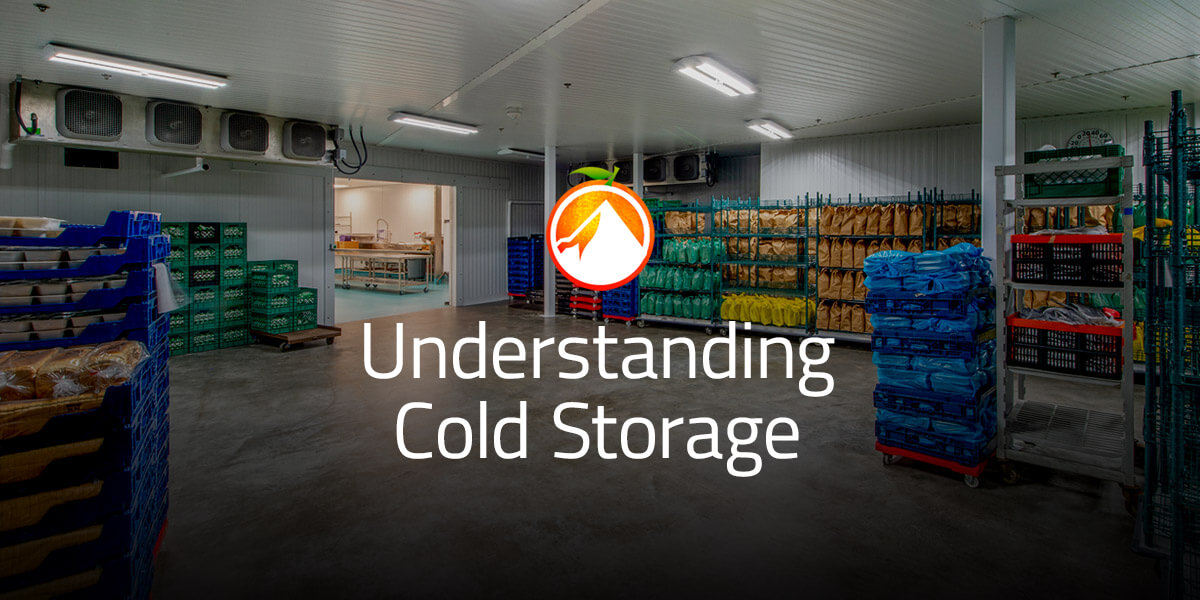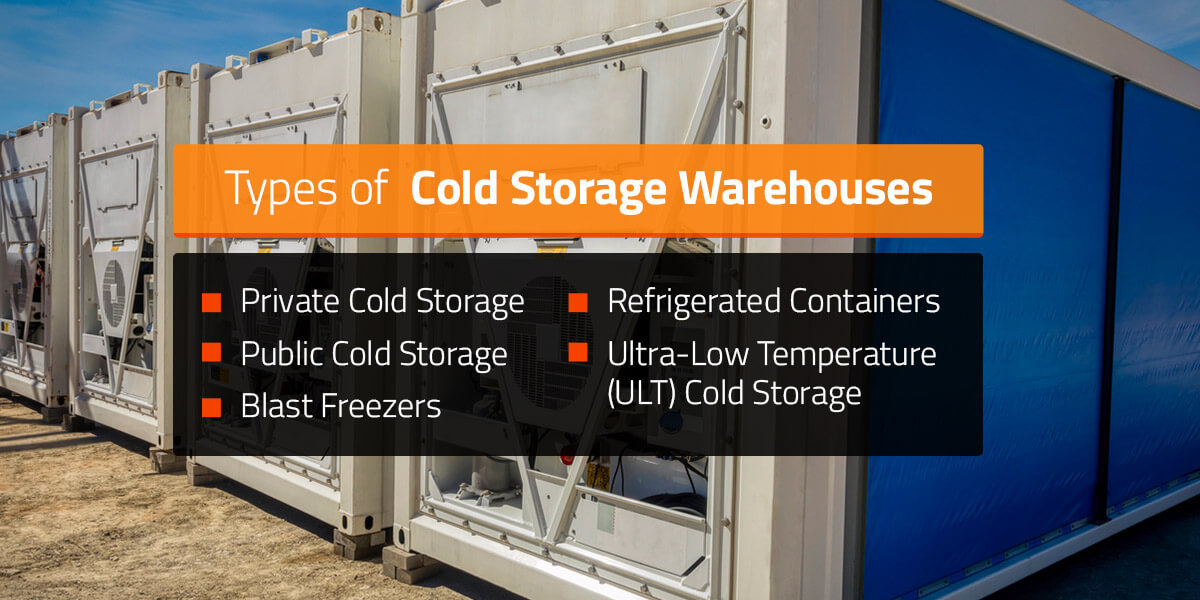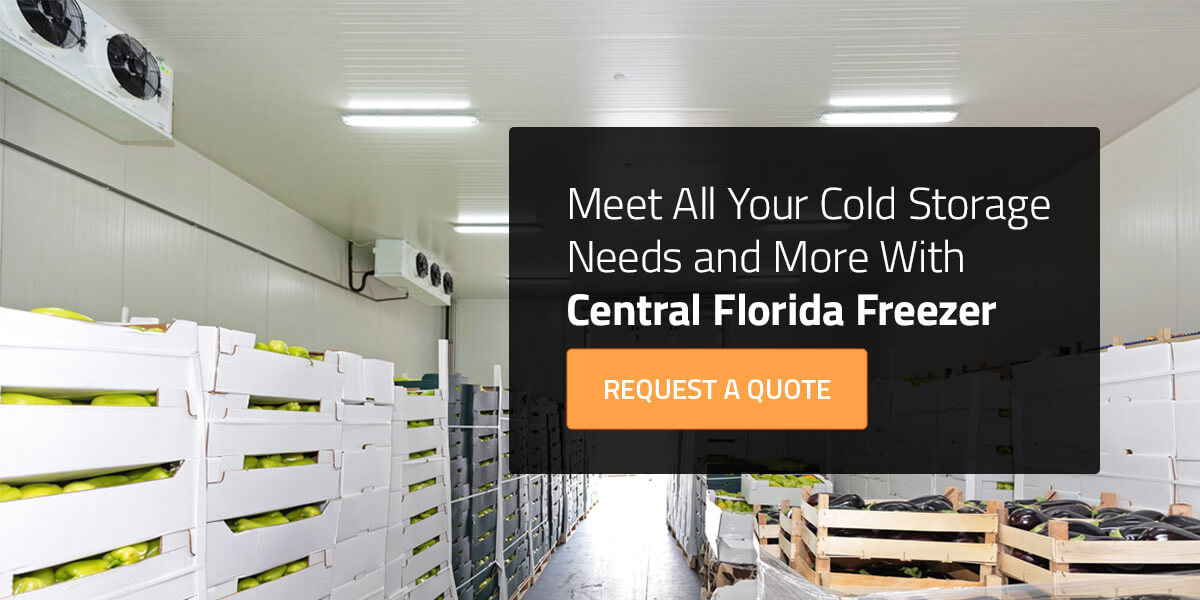Understanding Cold Storage

Companies need cold storage to maintain and preserve the integrity of certain temperature-sensitive products. This guide is designed to help businesses understand the basics of cold storage, what it offers you and how cold storage works?
Keep your perishable food and beverages preserved and safe by learning how the cold warehousing industry works and the different types of cold storage available.
What Is a Cold Storage Warehouse?
Cold storage warehouses are designed to store perishable goods in a temperature-controlled environment. There are two types of cold storage — refrigerated cold storage and frozen cold storage. Refrigerated warehouses preserve product integrity and extend the shelf life of products that need to remain unfrozen, such as fruits and vegetables. Refrigerated warehouses are kept at 33 to 55 degrees Fahrenheit.
Frozen cold storage facilities are designed for products that need to be frozen for preservation. This is best suited for storing meat, fish and certain produce that can be frozen without reducing the product’s quality.
Several industries rely on cold storage warehousing for logistical reasons. Using a temperature-controlled facility helps these industries preserve the integrity of their products during transport and transit. Cold storage warehouses greatly reduce food waste and keep pharmaceutics safe and functional while being transported to hospitals.
Other key benefits of cold storage warehousing include:
- Security
- Storage
- Preservation
- Quality assurance
- Inventory Management
There are different types of cold storage warehouses depending on your products and needs.
Types of Cold Storage Warehouses
The different types of cold storage warehouses cater to different industries, product quantities and needs. While there are two types of cold storage, many variations are based on cold storage warehouse requirements. These are five examples of the most commonly used types of cold storage warehouses:
1. Private Cold Storage
Private cold storage facilities are typically owned by the same company that uses and produces the goods stored in these facilities. Most of the time, these cold warehouses are connected to the manufacturing facility at which they are made. They are costly to run, operate and maintain, and as a result, are one of the least used types of cold storage. Companies like Nestle have private cold warehouses because they have the resources to run them and it gives them more control over distribution.
2. Public Cold Storage
These cold storage warehouses are owned and operated by third-party logistic companies. Public cold storage facilities receive and store goods for their clients before they are shipped or while in transit. In comparison, private facilities are only used by the company that owns them. This allows companies to focus on other aspects of their business, like product development, instead of having to finance and maintain their cold storage warehouses.
3. Blast Freezers
Blast freezers, also known as flash freezers, are designed to freeze products before they are placed in long-term storage quickly. They are mostly used in the stages between production and storage. Blast freezers can reduce a product’s temperature from 160 to 41 degrees Fahrenheit in roughly 90 minutes. This makes them ideal for preserving product flavors, textures and nutrients and preventing bacteria growth.
4. Refrigerated Containers
Designed to store small quantities of products that are temperature-sensitive. Refrigerated containers are run using grid-electric or diesel-electric cooling units and can maintain temperatures between 30 and 70 degrees Fahrenheit. Refrigerated containers can be customized with different types of lighting and remote temperature monitoring tools. They are usually 10 by 40 feet long and are easy to transport.
5. Ultra-Low Temperature (ULT) Cold Storage
ULT gained popularity during the COVID-19 pandemic because they were able to store the vaccine effectively. ULT is well-suited for the storage of medical products, treatments and samples. ULT facilities are capable of reaching temperatures between -4 and -122.8 degrees Fahrenheit.
While ULT is one of the smaller sections of the cold storage industry, it is still a valuable asset. Their cooling systems have a liquid nitrogen and carbon dioxide backup cooling system to ensure its products remain cold no matter what.
Highly-sensitive materials are also stored here because of their temperature ranges and security options. ULT cold storage facilities have monitoring systems like data logging, alarms and remote temperature control to keep everything inside safe and secure.
Top Industries Using Cold Storages
Industries worldwide utilize cold storage warehouses to keep their products fresh and preserved for storage and distribution. The extent to which cold warehousing is used is a strong testament to how reliable and versatile the industry is. You may even consider using cold storage for your business, knowing how other industries use it.
- Perishable food and beverages: The majority of the cold warehousing industry is dedicated to storing food and beverage products. Meat, seafood, fruits, vegetables, dairy and processed foods are some examples of products that need cold storage.
- Healthcare and pharmaceuticals: The storage of vaccines, samples and other medical implements and products is an essential part of the cold storage industry. These products need to be frozen effectively and reliably to be transported worldwide.
- Chemicals: Chemicals used to produce several products need to be shipped internationally, and the best way to preserve them and keep them safe is via cold storage. Some pertinent examples are chemicals used in plastics, cosmetics, pesticides and fertilizers.
- Flowers: Florists need to keep their flowers fresh, but freezing them is harmful to the plant. Flowers need refrigerated storage when being transported and stored.
- Art: Some works of art are kept in cold storage to help preserve the integrity of the materials. Museums, like the Denver Art Museum , keep temperature-sensitive pieces of artwork in cold storage when they are not being displayed to keep the art in pristine condition.
Average Cold Storage Rental Pricing
The prices of cold storage rental vary depending on the providers, industry and types of products being stored. The national average sales price of cold storage in 2021 was $157 per foot , with facilities near largely populated areas being the most desirable cold storage locations.
Meet All Your Cold Storage Needs and More With Central Florida Freezer
Central Florida Freezer provides businesses with cold storage for food, drinks and dry products. We also provide end-to-end refrigerated transport at competitive pricing. We also offer the use of a fulfillment center which we use to ship products directly to wholesalers.
We pride ourselves on being a reliable and practical solution to your cold storage refrigerated transport needs. In the Florida heat, we keep your freight cool no matter what. Find out more about how we can help you and our offerings when you request a quote from us today.

No comments yet.